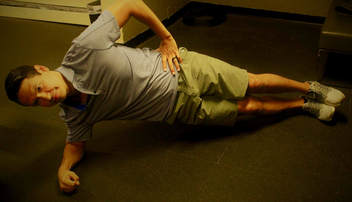The way we look at fitness is changing. Instead of jumping full throttle into a fitness routine, we must look first at whether we are moving with integrity before we even start. We must redefine fitness. It's not about the individual exercise but about how that exercise will help you continuously adapt to your environment.
OUR SERVICES INCLUDE:
OUR SERVICES INCLUDE:
- An initial movement evaluation based on FMS and SFMA guidelines
- Video documentation and biomechanical analysis of progress
- Short and Long-term movement and fitness goal planning
We use the The Functional Movement Screen, a ranking and grading system, that documents movement patterns that are key to normal function. By screening these patterns, the FMS readily identifies functional limitations and movements that are outside relative symmetry. We use this information to target painful and/or dysfunctional movement patterns and track progress, and then identify those exercises that will be most effective to restore proper movement and build strength in each individual.
There are 3 basic reasons your movement is painful or uncomfortable.
- Stability – Your ability or inability to maintain a static or moving position.
- Tissue length – Excessive shortening or lengthening of tissues can alter motion. We examine the connections between muscles, ligaments, tendons, nerves, and fascia.
- Joint movement - Your joints are designed to move in three plans of motion. Stabilizing joints, like the knee, are designed to move with limited capacity while the hip is a mobile joint and it's designed to move a lot. When you have pain in these joints, your movement changes to compensate.
To compliment the Functional Movement System, we use hands-on as well as machine-assisted soft-tissue approaches.
What is the role of soft tissue?
Muscles, ligaments, tendons, nerves, and fascia are the elements of soft tissue that create movement. They become compromised when there is a lack of glide between or over the tissues. For example, prolonged sitting or repetitive behaviors can make the tissues work against you.
The unique treatment protocol we use – one than incorporates more than 500 specific moves– allows us to identify and correct the specific problems that are affecting each individual's soft tissues. It's not a cookie-cutter approach.
Other soft tissue approaches we use include machine-assisted massage therapy to produce the desired effects on the nervous and muscular systems, as well as working to enhance local and general circulation of the blood and lymphatic fluids.
What is the role of soft tissue?
Muscles, ligaments, tendons, nerves, and fascia are the elements of soft tissue that create movement. They become compromised when there is a lack of glide between or over the tissues. For example, prolonged sitting or repetitive behaviors can make the tissues work against you.
The unique treatment protocol we use – one than incorporates more than 500 specific moves– allows us to identify and correct the specific problems that are affecting each individual's soft tissues. It's not a cookie-cutter approach.
Other soft tissue approaches we use include machine-assisted massage therapy to produce the desired effects on the nervous and muscular systems, as well as working to enhance local and general circulation of the blood and lymphatic fluids.










